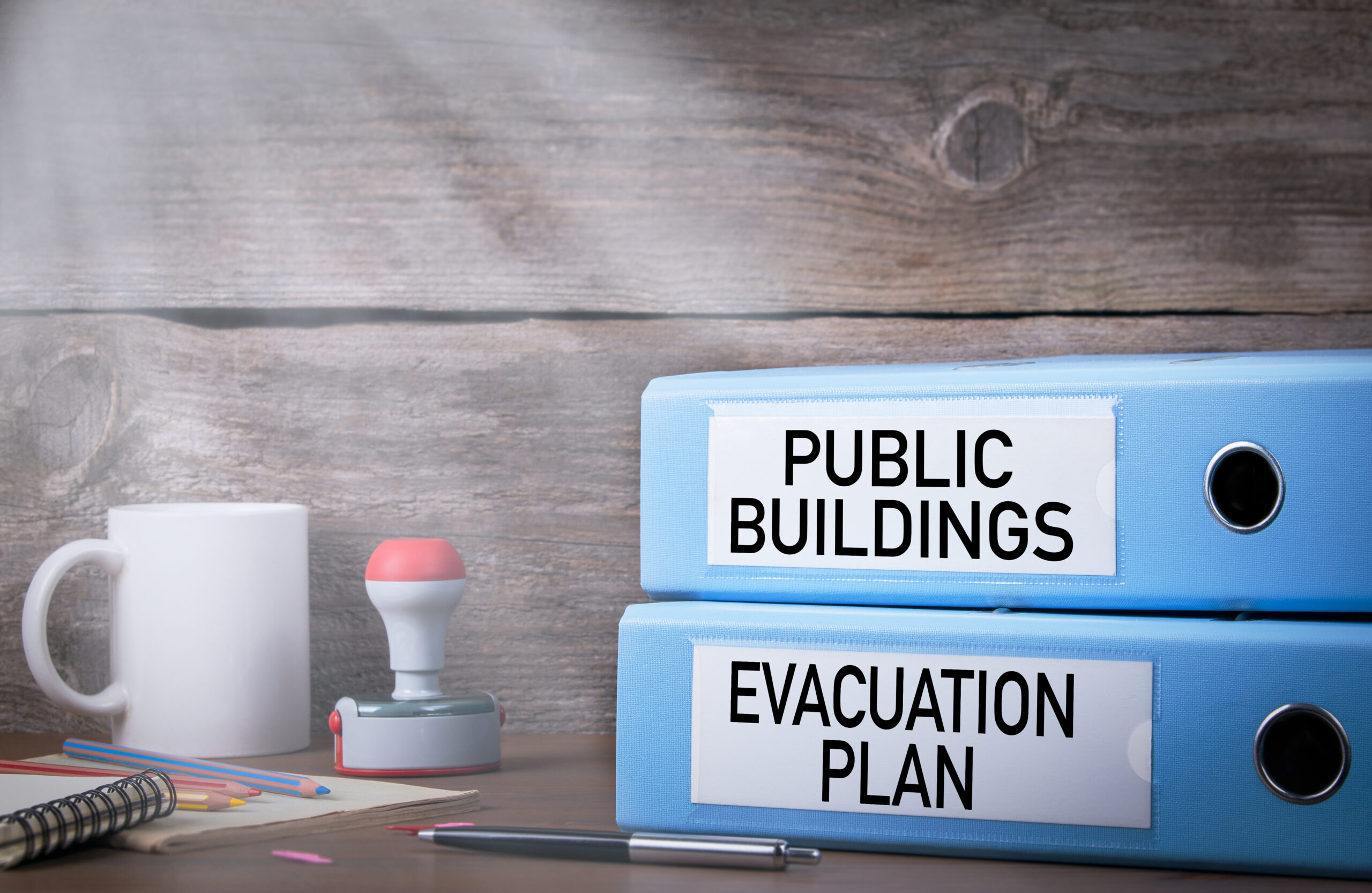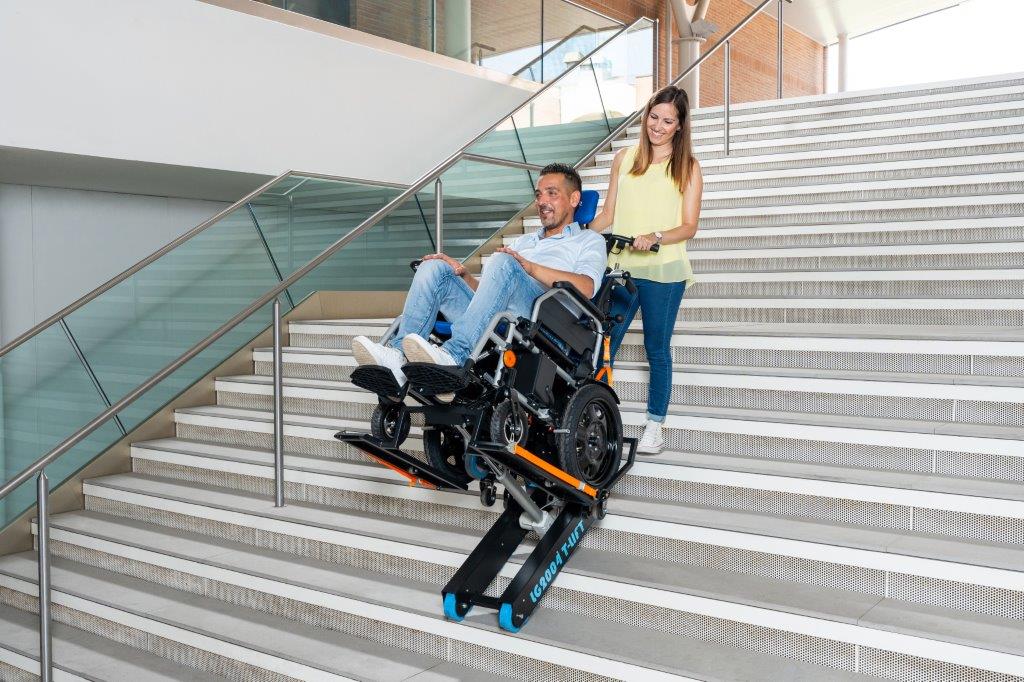Top 3 Mistakes Facilities Managers Make When Choosing Evacuation Equipment And how to avoid them…
The Importance of Fire Evacuation Plans: 1 Big Lesson from Ipswich Cinema Evacuation Incident.
The Importance of an Inclusive Fire Evacuation Plan
Evacuation specialists have emphasised the critical importance of having proper equipment and protocols in place, as highlighted by a recent incident at a cinema in Ipswich.
The incident, reported by the BBC here: https://www.bbc.co.uk/news/uk-england-suffolk-65302770 involves a woman and her disabled mother who were left inside the cinema after a fire alarm was triggered, causing panic and fear among them and a group of approximately eight others.
Fortunately, it was a false alarm, but the situation shed light on the potential dangers faced during evacuations when appropriate measures are lacking.
The woman, who had carefully planned the outing for her disabled mother, expressed concerns about the accessibility and evacuation plans at the cinema. After the alarm sounded, they attempted to follow the accessible route they had used to enter the cinema, but they found themselves in a corridor with no clear guidance on where to go. The cinema foyer was deserted, and the shutters leading to the rest of the shopping centre were closed, creating a sense of isolation and confusion.
The situation escalated into chaos as more people arrived in the cinema through a lift from the shopping centre’s car park. The woman, worried about their safety, questioned the response of the duty manager, who seemed to lack an understanding of the gravity of the situation. The incident has left her mother shaken and raised concerns about the lack of appropriate actions taken by the cinema staff.
According to a spokesperson for the Shopping Centre where the cinema is located, the alarm was triggered by a child pressing an emergency button. Although the false alarm was identified within three minutes, the incident underlines the need for comprehensive evacuation plans and ensuring the safety of all individuals, including those with disabilities.
Do You Have a Fire Evacuation Plan?
Are YOU doing enough to keep people safe?
Improving the safety and effectiveness of personal emergency evacuation plans (PEEPs) and assisted escape devices (AEDs) is crucial, particularly as there are more and more incidents occurring and especially in the wake of the tragic Grenfell Tower fire in 2017. While there has been progress in raising awareness about the importance of these evacuation measures, the question remains:
Are we doing enough to protect individuals with reduced mobility during emergencies?
It is essential to note that any plan is better than having no plan at all. However, companies must ensure they prioritise safety by carefully evaluating and selecting the appropriate equipment and strategies. When choosing an AED, consulting with knowledgeable companies that offer impartial advice on different models is highly recommended. Low costs should not be the sole determining factor, as cheaper options may compromise safety and suitability.
Important: Standard skid evacuation chairs, often the lowest-cost option, may not provide adequate support, comfort, or protection against potential hazards.
Many low-cost AEDs require wheelchair users to transfer out of their chairs, which can be distressing and uncomfortable, compromising their dignity. However, in scenarios involving heavy public footfall or wheelchair users unable to transfer, equipment allowing transfer-free evacuations becomes essential. Additionally, selecting an AED that can ascend and descend can offer extended utility, such as assisting during lift breakdowns or transporting heavy goods between floors.
Evacuation should prioritise not only safe exit but also passenger comfort and dignity as you can see from the exclusive range of products we offer here.
Assisted escape devices come in various designs, sizes, and prices, with cheaper options often focusing solely on evacuation rather than considering the physical complexities and support needs of individuals. Evacuees may have to remain in the AED until the building is deemed safe, underscoring the importance of equipment that offers proper support and comfort.
Technical Evacuation Assistants (TEAs) play a crucial role in successful evacuations. Employers must consider the strength, stamina, and weight differences between TEAs and passengers when selecting AEDs and clear guidance is needed for upgrading or changing equipment models to ensure TEAs can effectively evacuate everyone.
Consideration should also be given to the possibility of non-employees, such as friends or family members, serving as TEAs in residential buildings to expedite the evacuation process and prevent individuals from being left alone during emergencies.
Regular practice and trial runs are essential for both passengers and operators to build confidence and ensure effective evacuations. Mistakes can occur under stressful circumstances, so thorough familiarity with the equipment and its operation is vital.
Moreover, legislation and requirements for PEEPs should provide comprehensive support and guidance to aid in the creation of effective evacuation plans. Those purchasing equipment should conduct thorough research and seek expert consultation to ensure the chosen AED aligns with the unique requirements of operators, passengers, and building layouts.
Ultimately, any aspect of an evacuation left to chance can have severe consequences. By continuously improving PEEPs and AEDs, we can save lives and enhance the safety and well-being of individuals with reduced mobility during emergency situations.
This comes as standard when our clients engage with us for a consultation – see here https://evaccess.uk/consultancy
Should we value the immediate departure of individuals over their security, ease, and respect?
The core objective of evacuation is to ensure the safe exit of every individual from a structure. However, when it comes to evacuating a person with limited mobility, it’s crucial that their escape isn’t the only factor considered.
Naturally, a safe evacuation is the top concern, but if circumstances allow, why shouldn’t we also ensure that these individuals retain their dignity and comfort? Various assisted evacuation devices are available, varying in design, size, and cost.
Often, the most affordable option focuses primarily on immediate escape, overlooking other important aspects. For instance, a person who relies on a wheelchair may find the demand to abandon it distressing, and potentially harmful.
A common issue is that those selecting the evacuation devices may not be their actual users and might overlook the health implications that can result from improper lifting, incorrect seating positions, or inadequate support. Standard sled chairs, for example, provide little body support and no leg support, causing severe discomfort to those with specialised needs. This issue is exacerbated post-evacuation, as the evacuated person often must stay in the evacuation device until it’s safe to return inside.
Most evacuations involve at least one Professional Evacuation Aid (PEA) who must be accounted for in Personal Emergency Evacuation Plans (PEEPs). In an office setup, the PEA might be a coworker or an employee from the building. For a successful evacuation, the equipment should consider the PEA’s physical strength, stamina, and the weight difference between them and the evacuee.
Some evacuation devices negate these concerns due to their built-in safety measures, but with standard friction belt chairs, PEAs could be at risk if PEEPs don’t sufficiently safeguard them. If the available PEAs can’t safely operate the equipment, guidelines for equipment upgrades or replacement must be established to ensure everyone’s effective evacuation.
PEAs should be selected more thoughtfully. According to the Health and Safety Act of 1974 and the Management at Work Regulations of 1999, employers have a responsibility to protect their employees and cannot expose them to danger. This can create tension when selecting a professional evacuation aid, as an employee may be asked to re-enter a hazardous situation.
In many residential buildings, a PEA could be a friend, family member, or neighbour, not necessarily an employee. This could potentially expedite evacuation as people are often reluctant to leave their loved ones behind, as seen in incidents like Grenfell, resulting in more tragedies. If the loved one was trained as a PEA, both could evacuate without waiting for a third party to perform the evacuation procedure. This option is often overlooked, leading to insufficient guidance for the evacuee or the property owner to ensure a safe and lawful evacuation.
Regardless of who the PEA is, practice is essential. Emergency evacuations can be incredibly stressful, and if the evacuee and operator aren’t confident in the equipment, numerous mistakes can occur.
PEEPs should incorporate regular drills and training. Despite some devices handling most of the work, there are steps that must be followed to ensure safety and proper operator posture. For instance, those using standard friction chairs must understand that breaks can only be taken when they reach a landing, due to the lack of braking systems in these models. It’s vital that every part of the process is practiced increasing confidence and avoid potentially fatal errors.
Allowing room for error in an evacuation process could result in loss of lives.
PEEPs cover a vast area, and legislators and regulators could provide better support and guidance to those formulating these plans. It’s also the responsibility of those purchasing evacuation equipment to conduct comprehensive research and seek advice from experts who understand the range of models available and how they suit different operators, evacuees, and building layouts.
Considering the Ipswich Empire Cinema incident, it is crucial to understand the urgent need for well-designed evacuation plans, particularly those that consider individuals with mobility issues.
Recognising the potential hurdles your building’s steps pose is an essential starting point. Don’t wait for an emergency to expose your building’s accessibility weaknesses.
Begin creating safer, more inclusive environments today.
The Evaccess 5 Step Plan includes:
- Consultation and Site Survey: We dive deep into understanding your building’s layout and identify potential mobility barriers.
- PEEPS and GEPPS Online Training: We empower your team with essential safety principles through our comprehensive online courses.
- Selection of the Right Unit: Identify the unit that perfectly aligns with your building’s requirements, ensuring optimal safety and mobility.
- Training to Use Units: We ensure your team is fully equipped to operate these units effectively and confidently.
- Ongoing Maintenance: Our commitment extends beyond installation, providing regular maintenance to keep your units in peak condition.
We believe in solutions that cater to your building’s unique needs.
Click here https://mobility.evaccess.co.uk/5-step-plan to start our easy 5-step plan for identifying mobility challenges in your building.
Together, let’s work towards a future where everyone, regardless of their physical abilities, can confidently navigate our built environments, even during emergencies.
Your proactive steps today could make all the difference tomorrow.




